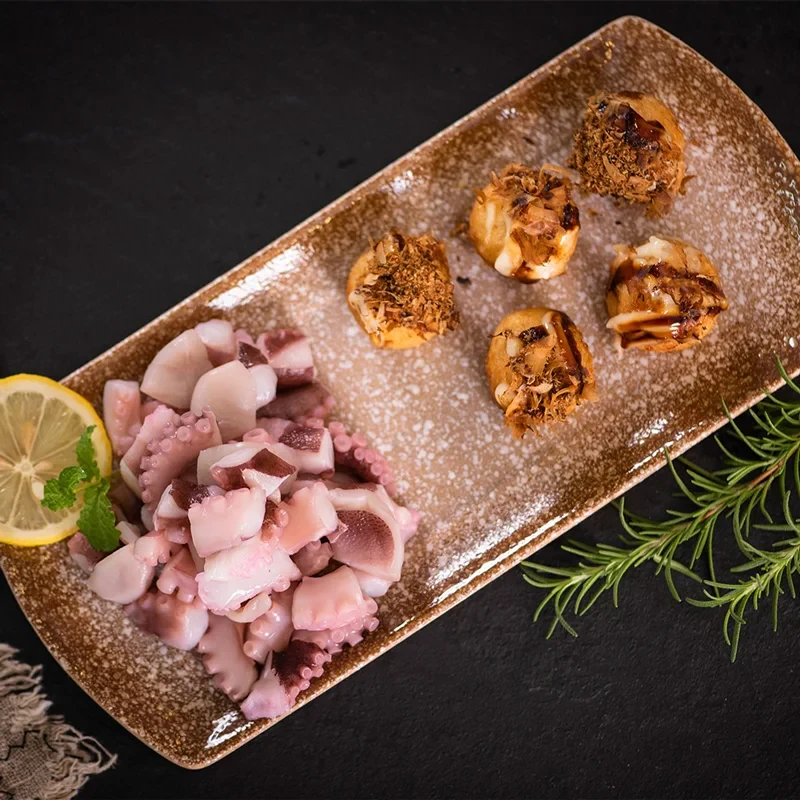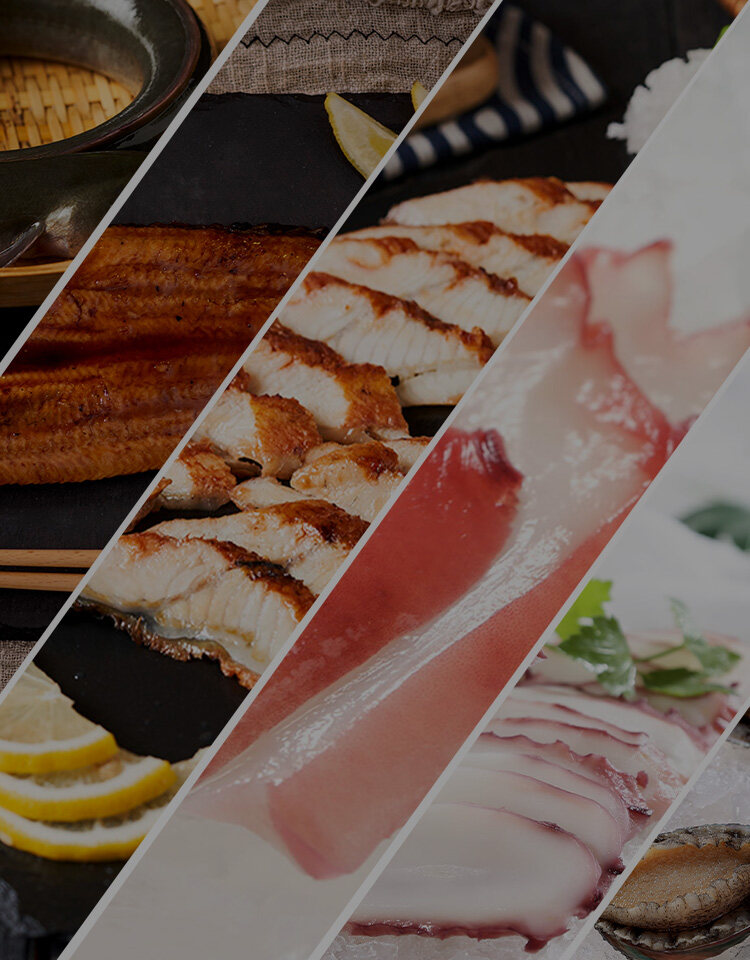Email cannot be empty
Password cannot be empty
Email format error
Email cannot be empty
Email already exists
6-20 characters(letters plus numbers only)
The password is inconsistent
Email format error
Email cannot be empty
Email does not exist
6-20 characters(letters plus numbers only)
The password is inconsistent


Different Kinds of Frozen Seafood
Frozen seafood is a fantastic option for those looking to enjoy the flavors of the ocean year-round. Whether you're stocking your freezer for a family meal, running a restaurant, or preparing for a special occasion, understanding the different kinds of frozen seafood can help you choose the best options for your needs. This guide will explore the various types of frozen seafood, from fish and shellfish to crustaceans, and give you tips on how to store and cook each one.
1. Frozen Fish Fillets
Frozen fish fillets are some of the most versatile options available in the frozen seafood aisle. Fillets are usually boneless and can be easily prepared with a variety of cooking methods like grilling, frying, baking, or pan-searing.
Common Types of Frozen Fish Fillets:
- Salmon: Rich in omega-3 fatty acids, salmon fillets are a popular choice for healthy meals. Frozen salmon fillets retain their quality and flavor, making them a go-to for everything from simple baked fish to hearty fish tacos.
- Cod: Cod is a mild-tasting fish with a flaky texture. Frozen cod fillets are perfect for fish and chips, baking, or steaming.
- Tilapia: Known for its delicate flavor, frozen tilapia fillets are ideal for quick cooking, such as pan-searing or grilling.
- Haddock: Similar to cod but with a slightly stronger flavor, frozen haddock fillets are perfect for casseroles or fish pies.
- Pollock: Often used in fish sticks or imitation crab meat, frozen pollock fillets are versatile and affordable.
Tip:
When purchasing frozen fish fillets, look for those that have been individually quick frozen (IQF). This method helps preserve the fish’s texture and flavor.
2. Frozen Shrimp
Frozen shrimp is a staple in many kitchens because of its versatility and convenience. It can be used in a wide range of dishes, from pasta and curries to salads and tacos.
Types of Frozen Shrimp:
- Peeled and Deveined: This is the most popular option for quick meals. It comes without the shell and vein, making it perfect for stir-fries, pasta dishes, and shrimp cocktails.
- Shell-On Shrimp: For a more flavorful shrimp, shell-on varieties are often preferred, especially for grilling or boiling.
- Cooked Shrimp: These are pre-cooked and can be added directly to salads or used in dishes like shrimp scampi.
- Raw Shrimp: Raw shrimp allows you to control the cooking process and is often preferred for grilling or frying.
Tip:
Always check the size of shrimp when purchasing frozen varieties. They come in a range of sizes, from small to jumbo, so choosing the right size depends on your recipe.
3. Frozen Shellfish
Shellfish, including oysters, clams, mussels, and scallops, are delicacies that freeze exceptionally well, allowing you to enjoy their rich flavors all year round.
Common Types of Frozen Shellfish:
- Frozen Oysters: Available in the half-shell or as whole oysters, frozen oysters are excellent for grilling, baking, or adding to soups and stews.
- Frozen Clams: Frozen clams, often sold in their shells or as whole clams, are perfect for pasta dishes like clam chowder or linguine with clams.
- Frozen Mussels: These are typically frozen in their shells and are great for steaming, adding to pasta, or making seafood paella.
- Frozen Scallops: Known for their sweet, mild flavor, frozen scallops are perfect for searing in a hot pan or baking.
Tip:
Frozen shellfish should be thawed gradually in the refrigerator. Quick thawing at room temperature can affect the texture and flavor.
4. Frozen Crustaceans
Crustaceans like lobsters, crabs, and shrimp are some of the most popular frozen seafood items. These creatures have firm, sweet flesh that’s enjoyed in a variety of culinary traditions.
Common Types of Frozen Crustaceans:
- Frozen Lobster Tails: Lobster tails are often frozen individually, making them easy to thaw and cook. They’re a favorite for special occasions and can be boiled, grilled, or broiled.
- Frozen Crab Legs: Whether you choose snow crab, king crab, or dungeness crab, frozen crab legs offer a convenient way to enjoy sweet, succulent crab meat without the mess of live crabs.
- Frozen Whole Lobster: If you’re looking for a complete lobster dinner, whole frozen lobster is often the way to go. They can be steamed or boiled to perfection.
Tip:
Frozen crustaceans should be cooked within a few months of freezing to maintain the best quality. Always check for signs of freezer burn or discoloration before cooking.
5. Frozen Fish Steaks
Fish steaks are thick slices of fish, often cut from larger fish like tuna or swordfish. These steaks are perfect for grilling, broiling, or pan-searing, and are often sold frozen for convenience.
Common Types of Frozen Fish Steaks:
- Tuna Steaks: Frozen tuna steaks are perfect for grilling or searing, creating a delicious, sushi-like meal with a crispy exterior and tender interior.
- Swordfish Steaks: Swordfish steaks are thick, meaty, and great for grilling. They can be cooked similarly to steaks, with seasonings or marinades.
Tip:
Fish steaks like tuna and swordfish should be thawed completely before cooking for the best results. These types of fish benefit from high-heat cooking methods like grilling or broiling.
6. Frozen Fish and Seafood Mixes
If you’re looking for convenience, frozen seafood mixes can be a time-saver. These blends usually include a variety of seafood like shrimp, squid, scallops, and fish, making them perfect for paella, seafood pasta, or stews.
Common Types of Frozen Seafood Mixes:
- Seafood Medley: A mixture of fish, shrimp, scallops, and sometimes crab or lobster. Ideal for seafood pasta or chowders.
- Mixed Shellfish: A blend of clams, mussels, and shrimp, often frozen together in a mix for seafood dishes like paella or jambalaya.
Tip:
Frozen seafood mixes are already portioned out for convenience, making them perfect for quick meals. Just make sure to check for any added preservatives or flavorings.
7. Frozen Squid and Octopus
Squid and octopus are popular in Mediterranean and Asian cuisines, and freezing them helps preserve their unique texture and flavor.
Common Types of Frozen Squid and Octopus:
- Frozen Squid Rings: These are often sold in rings and are ideal for frying, grilling, or adding to stir-fries.
- Frozen Octopus: Whole frozen octopus or octopus tentacles are great for grilling or adding to stews and soups.
Tip:
Frozen squid and octopus may require tenderizing before cooking, especially if they’ve been frozen for a long time. You can do this by lightly pounding them before cooking.

Selecting the Best Frozen Seafood for Your Needs
When it comes to choosing frozen seafood, there are many options available, each offering its own unique flavor and texture. From fish fillets and shrimp to shellfish, crustaceans, and squid, the variety is vast, and the possibilities in the kitchen are endless.
By knowing what types of frozen seafood are available and understanding how to properly store and cook them, you can enjoy delicious seafood year-round, whether you’re cooking at home or running a restaurant. If you’re unsure where to buy your frozen seafood, consider reaching out to trusted wholesalers like Dongshui Food who can provide high-quality products at competitive prices.

